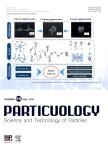Influence of co-solvent hydroxyl group number on properties of water-based conductive carbon pastes
Influence of co-solvent hydroxyl group number on properties of water-based conductive carbon pastes作者机构:School of Chemical Engineering and Technology China University of Mining and Technology Xuzhou 221116 China CAS Key Laboratory of Carbon Materials Institute of Coal Chemistry Chinese Academy of Sciences Taiyuan 030001 China
出 版 物:《Particuology》 (颗粒学报(英文版))
年 卷 期:2017年第15卷第4期
页 面:35-41页
核心收录:
学科分类:081702[工学-化学工艺] 08[工学] 0817[工学-化学工程与技术] 0805[工学-材料科学与工程(可授工学、理学学位)] 0703[理学-化学] 0702[理学-物理学]
基 金:国家自然科学基金 the support from the Youth Innovation Promotion Association of CAS
主 题:Water based conductive carbon paste Alcohol co solvent Screen printing Rheological property Marangoni flow
摘 要:A series of water-based conductive carbon pastes were prepared by wet ball milling, followed by vacuum defoaming using isopropyl alcohol, propylene glycol or glycerin as co-solvents. Screen printing was then used to prepare conductive patterns. To determine the influence of co-solvent hydroxyl group number on the properties of water-based conductive carbon pastes, the rheological properties of the pastes and the surface morphologies and conductivities of the printed patterns were characterized. The results show that paste viscosity increased with the number of hydroxyl groups and the latter also affected thixotropy. In addition, the boiling points and surface tensions of the co-solvents increased consistently with hydroxyl group number, affecting the hydrodynamic flow. The conductive carbon paste created using propylene glycol as a co-solvent was the best for screen printing because of its weak coffee-ring effect and appro- priate rheological properties, resulting in a smooth coating surface and uniform deposition of the fillers. The resistivity of the pattern printed using paste PG, containing the closest packing of conductive carbon black particles, was 0.44 Ω cm.



